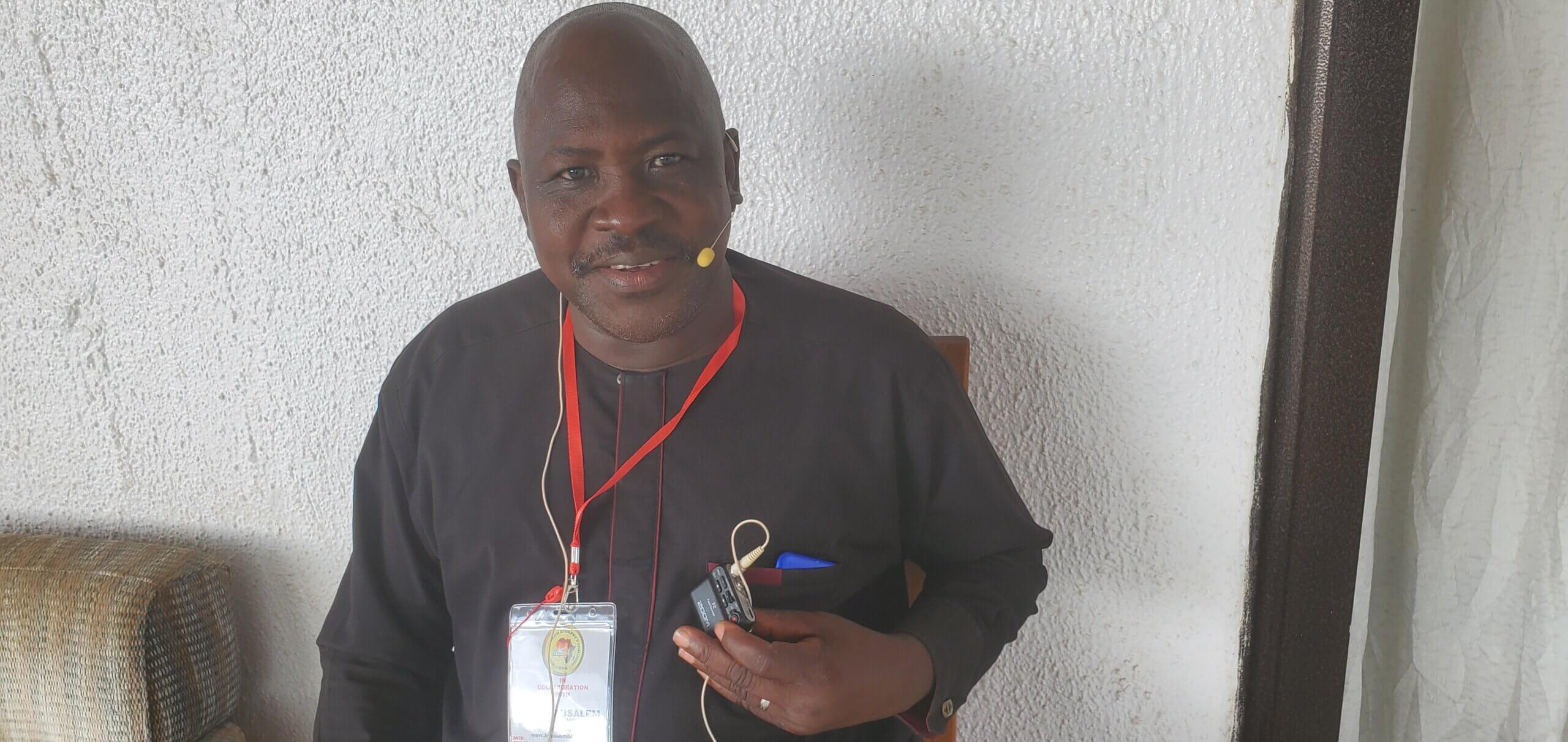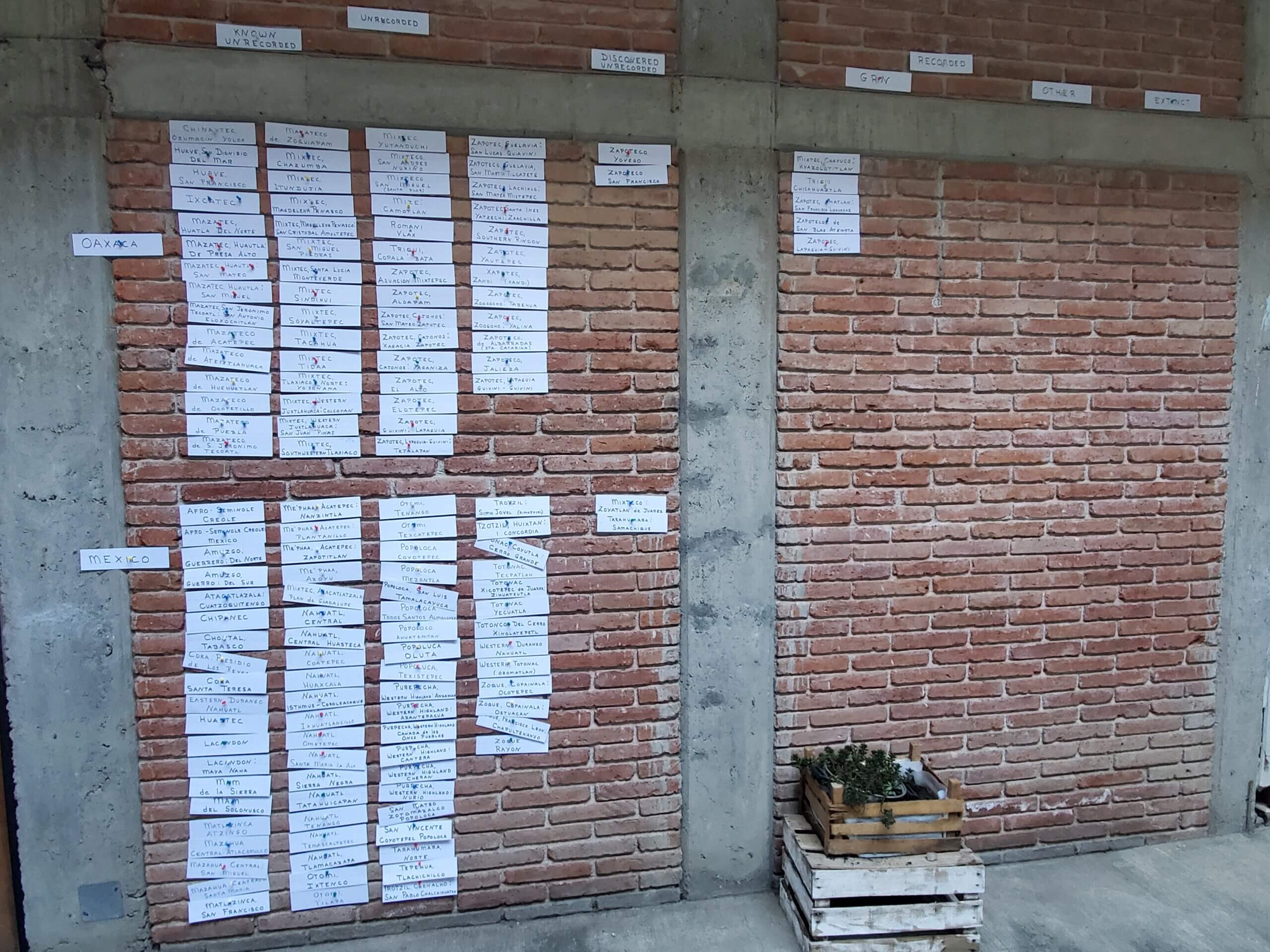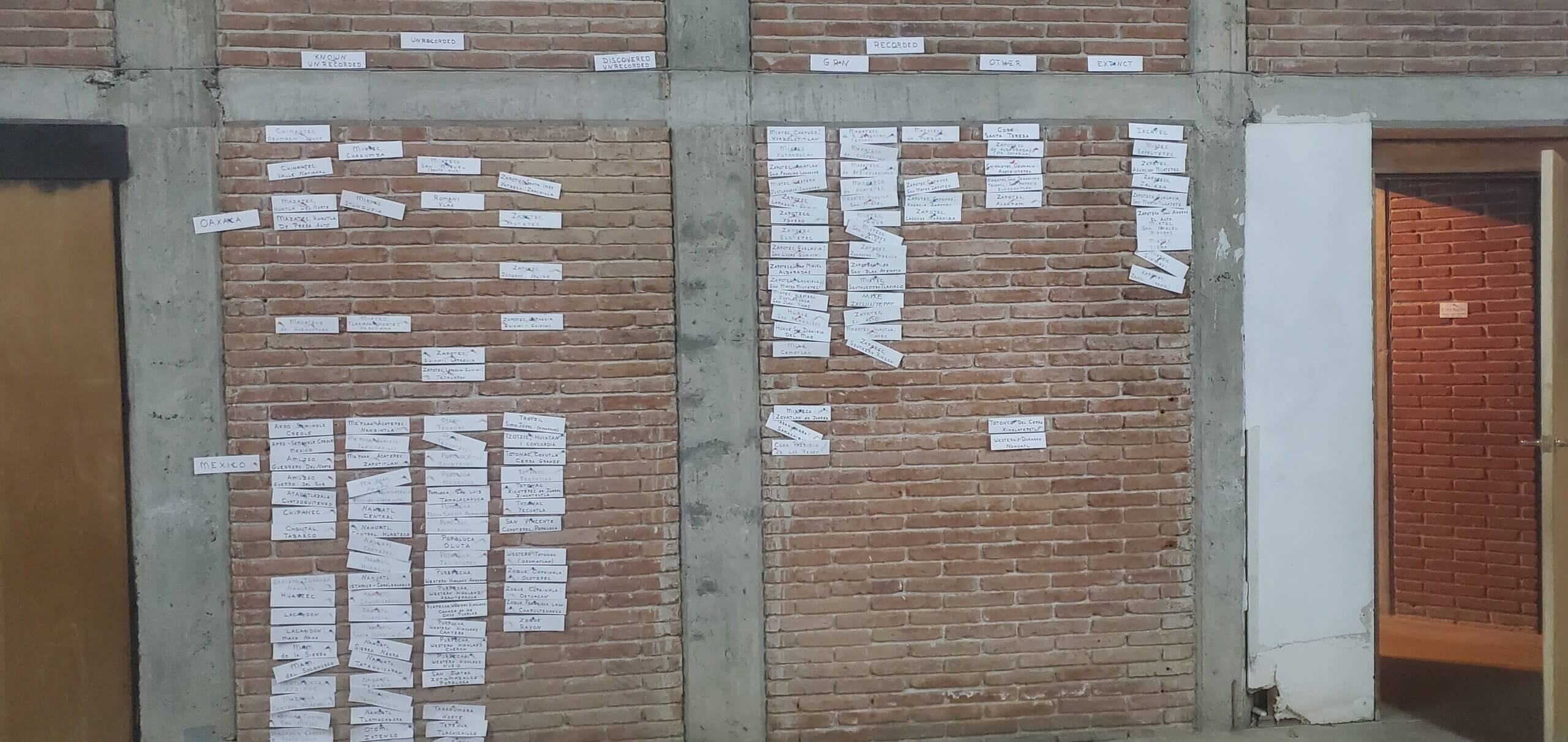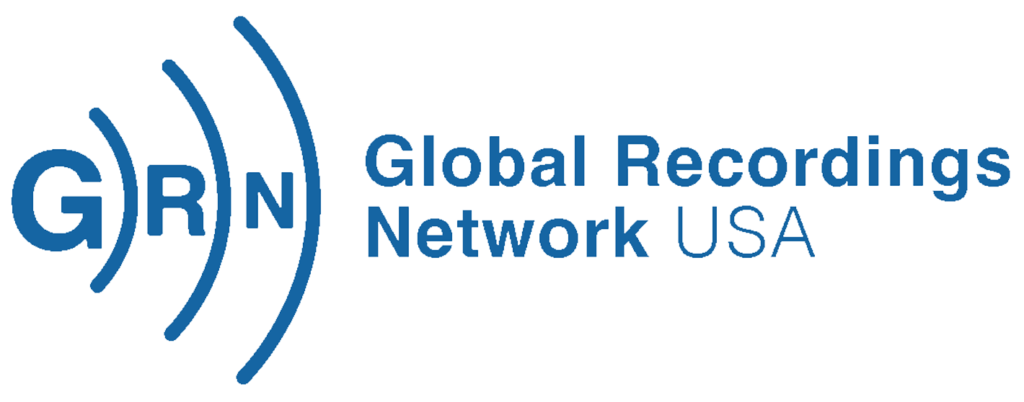Post 133 Final / The Next Language
December 31, 2023
Summation
It is appropriate to close this series of blogs entitled “The Next Language” prior to my retiring from GRNUSA, which takes effect on January 1, 2024.
I have decided to conclude by comparing the efforts of recording languages fifty eight years ago (when I started) alongside the recording mobilization efforts of the last three years, which is where this blog has been focused. I am going to let the already posted 132 blogs of The Next Language speak about many of the high points of this time period. What that has not changed in all these years are those miraculous moments when God steps in to illuminate His Word and the delivery of the Gospel.
This summation speaks to several of the underlying functional or technical aspects of the work that have changed or have been discovered and subsequently practiced.
The most obvious and visible change has been in the equipment. In 1965 I was trained by recordist Vaughn Collins on the then state-of-the-art Nagra recorder, a reel to reel analogue machine. That recorder with its accompaniments became a permanent part of and majority space holder of my backpack until I retired in 1980.
Today’s technology is digital. The size and weight of the equipment is minuscule by comparison, and the potential recording quality is greatly improved. All this is to the advantage of the nomadic field recordist. We continue to test equipment that is getting even smaller. Much of it is designed for professional body-mounted sound mikes that are used today even for big screen studio productions. Today you can hold in the palm of your hand all that is needed to make recordings that are superior in quality to the Nagra. With fixed-point mikes on a head mount or lapel, all the hazards of varying mike distances and tripod phantom noises are eliminated. And the medium storing the recording is a digital sound card smaller than your fingernail but capable of holding the audio of an entire Bible.
In Nigeria we gave one of these units to a language helper who took it to his village and came back a few weeks later with fifty Bible stories of the Unfolding Word all recorded. It had already been translated.

And this brings us to another change in the GRN recording world. When I began there was no published script manual. There was a huge paper stack of former scripts that had been used. If you search the GRID database you will see that most recordists worked with a handful of scripts that they were comfortable with which were appropriate to the target cultures. In Los Angeles I put together a core of scripts that covered both the essence of the Gospel and the chronology of the Biblical scope. It was used around the world. These scripts were only used as starting points. Specific choices largely depended on the needs of the target audience listeners and the capacity of the translation circumstances. I was always on the lookout for fresh material, especially in the way of cultural illustrations or parables. I can remember more than one time actually assembling an original script that we would talk our way through as we recorded. “The Father of Lies” had its genesis while a converted shaman and I talked our way through his experiences and relevant Scriptures. He was illiterate but had had valuable experience that later proved very useful in other American languages.
Today there are vast resources for script material that is easy to transmit digitally to language helpers. Much of this is already graphically enhanced for easy adaptation to social media — which has become a significant resource for distribution. We have even been invited to translate audio for the videos produced by the Bible Project. Other missions are focusing on the Jesus Film or several other Bible-based video productions.
Recordists today are also collecting photos or video clips that can spotlight the finished audio on social media.
In our recent contacts we focused on original, local-based content. This was especially true in Mexico where we were working with tonal languages that had discourse level issues which complicated faithful oral translation. So we solicited indigenous sermons and testimonies and in one case we recorded over a dozen original worship songs. We avoided recording the Good News series in language clusters that already had those recordings. I see little value in repeating content in recordings that are going to be shared across several language sub variants.
One of the biggest changes in recording from more than fifty years ago is the availability of data. I worked in the Amazon for years without anything more than a paper list of recorded languages. Today, thanks to language tracking and the internet, we have not only data from our own GRID database but links to numerous other databases and, most recently, the MapApp, which actually ties data to geography. This immense amount of data can be carried on a smart phone. We found it invaluable to have a team member that could coordinate old data and ingest new data.
Following the lead of Hudson Taylor, who liked to turn things into graphics, we devoted an entire wall in Mexico to posting the one hundred or so unrecorded languages with individual tags. We called that our Wall of Pain (October 2021). 
As those languages were contacted we moved those tags to the right side of the wall under categories of “newly discovered” (there were several of those), “recorded,” “extinct,” “recorded by third party,” or “other.” We called this right-hand wall the Wall of Gain (January 2022)!

Probably the biggest change procedurally to the recording process was in the area of language research. Team members were trained specifically to make initial contact and get word lists. There is no substitute for shoes-on-the-ground, toe-to-toe encounters at this phase. These encounters were about much more than word lists. They included getting origin stories that identified how these people explained their arrival at their location. They included playing related recordings in closely related languages (or not) and evaluating those recordings. It included looking for believers and noting language use and documenting GPS coordinates. By then the language speakers knew what we were about and hopefully there would be an invitation to record. The final word to record or not to record was made by the people themselves – not by a third party or an agency or even an ecclesiastical hierarchy.
In the case of one of the Cora language variants we left the recordings from the nearest variant along with the Jesus Film with the President of the village and came back a month later to be told that the languages were the same and also that if we wanted to schedule a date for showing the Jesus Film in the town plaza we would be welcome. We left that task to the local Assemblies of God pastor who had earlier joined our research team.
Later, in Nigeria, our team learned that there were religious and political prejudices that would often worked against recording a smaller variant. Muslims had a blanket policy that no indigenous languages were to be used. Municipal and even church agencies would not want to dilute the landscape by giving credence to a new variant. It was only the target people themselves that would get enthused about having something they could call their own.
Improved transportation connectivity enabled multiple visits and the possibility of bringing language helpers (LH) out to a studio. Experiences in Nigeria convinced us to convert an office room into a small studio. This was a far cry from the experience 50 years ago of making contacts made by canoe and paddle in the middle of the Amazon rain forest. When you found some of those nomads, you did business right then or likely never again for a whole generation or two, as those contacts were well able to melt back into the jungle for decades.
In the case of the Zapoteco of San Pedro El Alto, I counted a dozen times we went to the location before we actually recorded. One time we were just passing through to a different language and Mike H’s vehicle ended up stuck on a steep corner and we paid the municipality to help us out. They tipped us off to where there might be a believer. That led us to a group of believers in a neighboring town and after initial resistance to making recordings and a church board meeting they had the first service ever where they actually conducted the meeting in the language and elected to record a short sermon and several first-hand testimonies from elders who had survived both the Catholic church and the local shaman (who just happened to be the first person that gave us a word list)!
The concept of team recording today is very different from what I experienced going solo in the Amazon. For most of my career in South America I was the only recordist on the continent. I totally agree with the concept of teamwork that was endorsed at the 2019 GRN council meetings.
Today’s concept of “team” includes a worldwide network of GRN autonomous centers and administrators. It includes the networks of church planting ministries as well as a number of missions like ourselves focused on reaching the unreached. It includes ongoing contact with former language helpers. Recently I was talking with a future LH and, after the story of the Embena was related to him, we actually called an Embena who was delighted to converse half way around the world. They have now formed a prayer link that would have been impossible 50 years ago.
In Nigeria we learned a lot from Rhema International who we found making 21 simultaneous oral Bible translations/recordings in a single building. GRN Nigeria Center Leader Kish serves as Chairman of their board and the Rhema Director gave us a lot of direction on how to tackle five hundred unrecorded languages.
To balance out the benefits of team recording, it must be remembered that arriving in a targeted language village with a “team” is a logistical load that those villagers take seriously. That is fine if it is anticipated up front but can become ugly otherwise, especially if the project takes longer than expected. It must also be remembered that multiplying teams and team members becomes an administrative load for the host GRN center. This may or may not be appreciated.
In recent years, I have found that today there is no shortage of educated, dedicated, unemployed Christian youth who are willing to die for the Gospel in the most primitive places — if supported. The limiting factor is not the lack of workers, it is the lack of administrative and financial support.
This is in sharp contrast to the days in the sixties when I couldn’t find a single Colombian youth who was willing to cross the prejudice barriers to work with the non-Latin populations. My most common companion became jungle residents themselves who had never been to school or even walked on a sidewalk. They were unlikely persons to train to become recordists. (The exception was two Terena guys I trained in Southern Brazil.)
With new equipment comes the ability to use new recording techniques. Gustavo taught us to always record with the language helper standing. That vastly improved voice dynamics and would make it easier for the team member directing expression. (That would have been Ann Sherwood in the old days.)
In the training course in Mexico Ed Young not only gave us historical context with his videos and stories but reminded everyone that Mexico’s unrecorded languages are the responsibility of Mexico’s Christians.
The proliferation of believers and the much higher level of multilingualism, digital proficiency, and access all facilitate reaching every language. That goal is something I only dreamed about in my youth.
In closing, I would like to thank the team members that collaborated in the last three years.
- Center Directors: Chucho and Kish
- Trainers: Gustavo, Ed, Joshua, and (by internet) Noel and Rob
- Trainees: Ezekiel, Joel, Stephen, Ariadna, Soloman
- Interns Nathaniel, Markos, and Joshua
- Language location and map orientation: Chuy, Chucho, Joshua
- Data support and trainee: Patti
- Field contact and research: Francisco, John, and three guys in Nigeria who in a couple of weeks jumped on motor bikes and visited more than fifty languages
- Drivers: Mike and several others who will be unnamed but not forgotten
- Churches and individuals who sacrificed to give us offerings and loaner vehicles
- A couple of regional native linguistic specialists with a vision who guided us through language clusters (Mixteco and Mazateco)
- Numerous language helpers
- An unnumbered army of prayer warriors all of whose names only God knows
- And of course the Catalina home team that kept the blog going, the language tracking/mapping moving, the money, prayer, and communication flowing.
Although I am retiring from GRN and interrupting “The Next Language” blogs, I am living in an Asian country and continuing to move toward the “last” language. I will necessarily be less visible but still have as my goal to target some of the highest priority unrecorded languages in the world. Thanks for your continued prayers.
I don’t yet have new contact information but soon you should be able to get that from GRNUSA. It is my intent to continue something like the blog but in a less conspicuous venue. If you want to be in direct contact, you can join me on WhatsApp: Larry DeVilbiss +1 907 355 0733.
God Bless,
Larry DeVilbiss
Global Recordings Network USA (retired)
